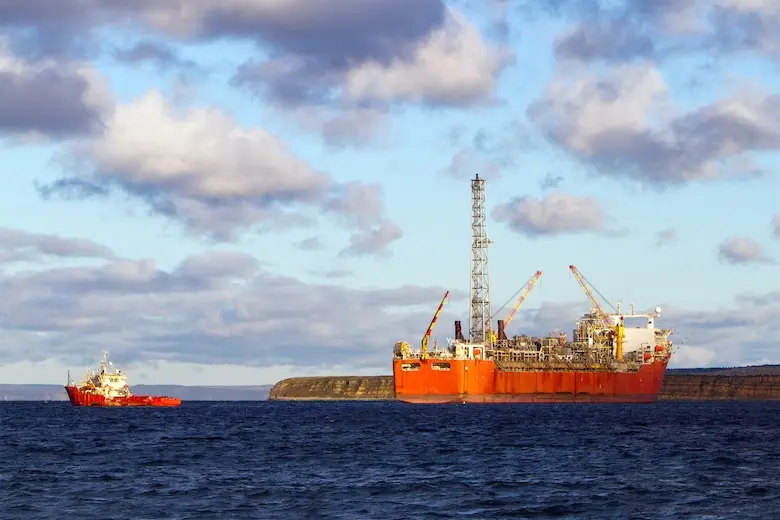Floating Production Storage and Offloading (FPSO) vessels are vital assets in offshore oil and gas production, offering a cost-effective and flexible alternative to fixed platforms. However, their complex operations, exposure to harsh marine environments, and the handling of hydrocarbons introduce significant safety challenges. This article explores the critical Process Safety and Health, Safety, and Environment (HSE) measures implemented on an FPSO to mitigate risks and ensure operational integrity.

Process Safety on an FPSO
Process safety focuses on preventing catastrophic incidents such as explosions, fires, and toxic releases. Key process safety measures on an FPSO include:
a. Hazard Identification and Risk Assessment (HIRA)
- Hazard and Operability Study (HAZOP) and Hazard Identification (HAZID) techniques are used to identify potential process risks.
- Quantitative Risk Assessment (QRA) evaluates the probability and consequences of hazardous events.
b. Process Control and Automation
- Distributed Control Systems (DCS) and Supervisory Control and Data Acquisition (SCADA) ensure safe operations and emergency shutdowns.
- Emergency Shutdown (ESD) Systems automatically isolate critical processes to prevent escalation of hazardous events.
- Fire and Gas Detection Systems continuously monitor hydrocarbon leaks, toxic gas releases, and fire outbreaks.
c. Blowout Prevention and Pressure Relief Systems
- Blowout Preventers (BOPs) and pressure safety valves safeguard against overpressure conditions.
- Flare and Venting Systems safely dispose of excess gases, preventing hazardous accumulation.
d. Safe Mooring and Offloading Operations
- Dynamic Positioning (DP) Systems maintain stability to prevent operational accidents.
- Tandem Offloading Safety Procedures ensure safe transfer of crude oil to shuttle tankers, reducing spill risks.
e. Inert Gas and Vapor Recovery Systems
- Inert Gas Systems prevent fire and explosion hazards by maintaining a non-flammable atmosphere in storage tanks.
- Vapor Recovery Units (VRU) minimize emissions by capturing hydrocarbon vapors.
Health, Safety, and Environment (HSE) Measures
HSE focuses on protecting personnel, equipment, and the environment. The key measures include:
a. Fire and Explosion Prevention
- Active Fire Suppression Systems, such as water deluge, foam, and CO₂ extinguishers, are strategically placed.
- Passive Fire Protection (PFP), including fireproof coatings and blast-resistant structures, minimize fire spread.
- Hot Work Management ensures welding and cutting activities are safely conducted.
b. Emergency Response and Evacuation
- Emergency Response Plans (ERP) establish structured actions in case of fire, gas leaks, or oil spills.
- Lifeboats, Escape Chutes, and Muster Stations provide safe evacuation routes for personnel.
- Regular Drills and Training prepare crew members for emergency scenarios.
c. Personal and Occupational Safety
- Personal Protective Equipment (PPE) (e.g., fire-resistant clothing, breathing apparatus, gloves) is mandatory.
- Behavior-Based Safety (BBS) Programs encourage a proactive safety culture onboard.
- Confined Space Entry Permits ensure safe access to enclosed areas with proper ventilation and monitoring.
d. Environmental Protection Measures
- Produced Water Treatment systems remove hydrocarbons before discharge into the ocean.
- Oil Spill Contingency Plans include spill response teams, booms, skimmers, and dispersants.
- Waste Management and Recycling Programs minimize environmental impact by treating solid and liquid waste responsibly.
e. Occupational Health and Welfare
- Medical Facilities and First Aid Stations provide immediate care for injuries and illnesses.
- Fatigue Management Programs regulate work shifts to prevent exhaustion and human error.
- Mental Health Support ensures crew well-being during long offshore deployments.
Conclusion
Ensuring safety on an FPSO requires a robust combination of process safety controls, engineering safeguards, and HSE best practices. By integrating risk management, automation, training, and emergency preparedness, FPSO operators can effectively mitigate hazards and maintain a safe working environment.
As offshore oil and gas production continues to evolve, ongoing advancements in technology, safety standards, and environmental regulations will further enhance FPSO safety and sustainability. Investing in comprehensive safety culture and compliance ensures the well-being of personnel, protection of assets, and preservation of the marine ecosystem.
